Thursday 30th January 2014The Changing Art World
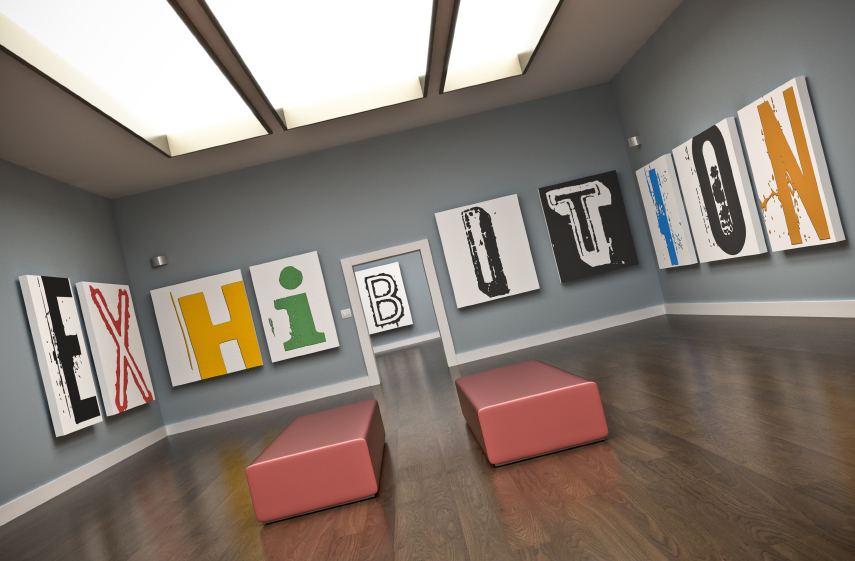
It's no surprise that the art world changes regularly - innovation, re-examination and remixing are three of the main driving forces behind artistic vision, and have been there in some form or other since the very beginning of recorded history. It should come as no surprise, then, that the way both artists and viewers interact with art is also undergoing a change. To any of you who already use a Gallereo page to sell your work, whether in conjunction with offline galleries or not, this should come as no surprise. After all, you're already adopting one of the major changes that have shaken up the traditional gallery model. Online art sales are booming, and while many buyers don't want to buy artwork without seeing it 'in the flesh', this attitude is also changing.
Online galleries are the only shakeup going on at the moment, as the growing popularity of the art fair has begun to change how galleries operate. Instead of relying on general foot traffic and industry parties to generate buzz, many gallery owners - and independent artists - are finding great success from the consolidating opportunities offered by art fairs. In the same way that online art shopping allows potential buyers to browse a virtually unlimited selection of work, art fairs are offering the chance to browse a massive selection while still actually being able to inspect the pieces firsthand before purchase. For gallery owners, the potentials are just as tantalising, with some gallery owners able to earn as much as they normally would in an entire year from a single successful art fair.
Now, you're not going to stumble across a Van Gogh or a Picasso, even at as prestigious a fair as the recently completed London Art Fair, but as the number of works by the most well-known world famous painters are increasingly becoming unavailable as they get picked up by private collectors and museums unlikely to sell, the demand for contemporary work is growing by leaps and bounds. It doesn't hurt that many different cities around the world are beginning to catch on to the trend, making local contemporary work available to a much wider audience than galleries have been able to reach traditionally. Artists who take the time to combine an online presence with appearances at local art fairs are likely to dramatically increase both their sales and general exposure within the art world.
Posted on January 30th 2014 on 03:08pm
0 Comments
Tuesday 28th January 2014Image Editing Software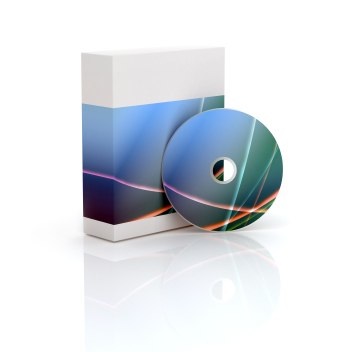
Getting your artwork online and presented in the best possible way can be quite a challenge. Once you've created your masterpieces, and you've taken your digital photos using a colour-calibrated workflow (check out our recent posts on those topics if you missed them), you're going to need a good quality image editor to finish off your images. No, MS Paint doesn't count, but fortunately there are a ton of other great editors out there.
In many cases, your digital camera will come with some sort of image editing software. While those options are usually more or less acceptable (Capture NX from Nikon or PIcture Style from Canon, for example), they often leave something to be desired. If you're lucky, your camera may come bundled with more professional and well-designed software like Lightroom, but not everyone is so lucky.
For those of you with the budget and the desire for serious image editing power, Adobe Photoshop is the gold standard for any kind of computer image work, but it comes with a gold standard price tag that can be off-putting to many people who won't end up using the full range of its capabilities. Adobe Lightroom is a cheaper alternative that still packs some editing punch, but it's designed more for photographers who work with large numbers of images on a regular basis. Adobe Photoshop Elements, the stripped down version of Photoshop designed for more casual users is also an excellent choice, but if you're a starving artist like many of us, you'll want to check out the free options we've found before you start deciding between Photoshop and paying the rent.
The open source community has long been pushing its competitor to Photoshop, the relatively unfortunately-named GIMP (General Image Manipulation Program). It's completely free to download, and it offers almost all of the functionality of Photoshop, but it leaves a great deal to be desired in terms of ease of use. The latest version is much better than previous iterations, but the user interface and help system are decidedly lacking when compared to any of the Adobe products mentioned above.
If that's not your style, there's a new kid on the block, which takes a unique approach to the problem - you don't have to download any software at all, because it works entirely within your web browser - and it's also free. Dubbed 'Pixlr', you simply upload the photos you want to work on and then you can use a set of functions relatively similar to Photoshop Elements that should provide most of the image editing tools you'll need. The downside, of course, is that you have to be always on the web to work, which isn't an option for some of us.
Posted on January 28th 2014 on 01:23pm
0 Comments
Friday 24th January 2014The Best Cities for Art Lovers 3: Santa Fe
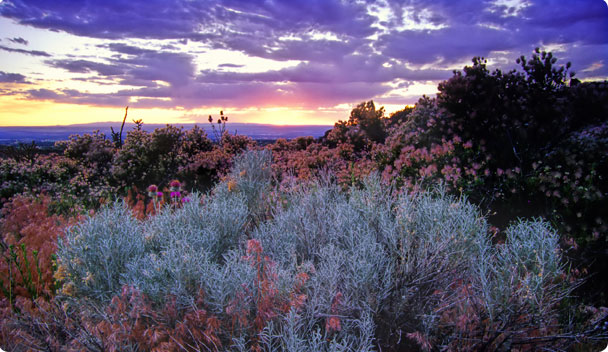
In the continuation of our exploration of the lesser-known cities around the world that cater to artists, it's time to move things out of the North and get a break from the relentless winter that just won't seem to let up. Santa Fe, New Mexico is definitely on the lesser-known side of things even to those in North America, and so is probably virtually unknown throughout the rest of the world. Located in a stunning series of geological formations, it has a feel truly all it's own - that has created some truly beautiful pieces of work.
Not that it's all artistic glory, of course. Santa Fe has a huge reliance on tourists who come for the art community without necessarily being a part of the art community, which leads, as anyone who's visited the artistic and cultural centres of Europe can attest, to a preponderance of kitsch and spineless, shameful aping of true talent. But paradoxically, this welter of second-rate mass-produced artwork helps to highlight the truly amazing works, and some even argue that it has inspired the serious artists of the region to make even more creative distinctions and powerfully enabled their work.
Santa Fe boasts a number of famous galleries, including the Museum of New Mexico, which administers several galleries, is in fact older than the state itself, boasting a number of treasures from contemporary and historical American artists, and is currently featuring a beautiful exhibition of Goya's work in conjunction with the British Museum, exploring how the famed Spanish artist's work informed and inspired a good deal of art in the American Southwest.
The Georgia O'Keeffe Museum is also located in Santa Fe, boasting the world's largest collection of works from the internationally-renowned artist, spanning the extend of her career from 1901 to 1984, when her career was sadly ended by failing eyes. It is a testament to American modernism, and is the only museum dedicated to a world-famous female artist.
The real contemporary treasures are likely to be found in the city's numerous small, independent galleries, which may very well outnumber the hotels in the city limits - over 240 individual galleries at last count. The Santa Fe Art Fair, about to enter it's fourteenth year of exhibition, is also an experience not to be missed, and is rapidly gaining renown around the world as more and more far-flung galleries sign on to contribute exhibits each successive year.
Posted on January 24th 2014 on 04:49am
0 Comments
Wednesday 22nd January 2014The March of Progress in London's Galleries
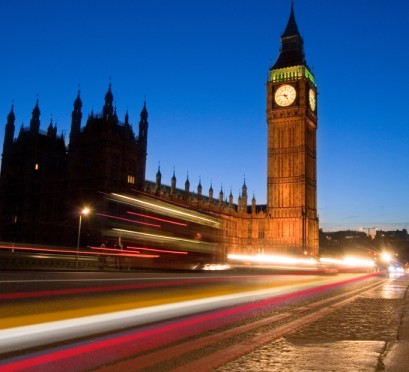
It's no secret that the art world is undergoing some major changes. As we discussed recently, the market for auctionable art has taken a turn for the better in recent years, driven by expanding wealth in Asia and the Middle East, as well as increasing consumer confidence throughout the West. However, in the market for artists still making a name for themselves, a number of other changes are taking place, most notably the transition away from the traditional model of the independent gallery towards online galleries managed by the artists themselves as well as the growing popularity of the 'art fair'.
This transition can be something of a double-edged sword, especially in locations that are historically and locally famous for their art gallery districts. London's own venerable Cork Street is - to some, surprisingly - just one of the latest to suffer the depredations of real estate developers hoping to maximise profits in desirable downtown locations. This Valentine's Day, the local planning council deadline for public response to a proposal to redevelop historic Cork Street, home to a great number of galleries, some of whom have had their current locations for nearly a century.
Westminster city council has tentatively approved the deal in principle, which hoped to build 42 flats over a shopping centre, pending the results of the request for public responses. A number of other developments are slated to go in, assuming that the first proposal is ratified. To date, a number of prominent public figures have spoken out against in favour of preserving the cultural and historical significance of Cork Street, including actor Bill Nighy, comic Graham Norton, illustrator Quentin Blake and retail leader Mary Portas, among many others and a great deal of support from the general public. A plan currently exists to place a portion of the neighbourhood under the purview of a 'special policy area', but gallery owners hope to dramatically expand the borders of the area to save as many galleries from relentless urban development as possible.
No matter how much of the area is saved, however, it's impossible to mistake it as a sign of the changing times of the art world. As any good artist will tell you, traditions are always being up-ended and turned inside out in art, and the way the public interacts with art isn't going to exempt from those changes. While there will surely always be a desire for physical galleries, they can no longer assume their own viability without changing and adapting.
Posted on January 22nd 2014 on 04:40am
0 Comments
Friday 17th January 2014The Drive to Save Detroit's Art Collection from Bankruptcy

While it may not be common knowledge in much of Europe, America's car manufacturing heartland is having some troubled times of late. After talks of bailouts of major car companies and successfully saving a few of them, we're finally starting to see some more complete fallout from the 2008 economic collapse that crippled much of American industry. One of the less-expected casualties from this turmoil, however, was the city of Detroit. Known unofficially as 'Motor City', Detroit was at the centre of American car manufacturing for a number of companies, and the city has been left bankrupt and desolate as jobs moved away and with them, the people. Abandoned houses are common, and the city is struggling to balance its debts.
Even fewer know that Detroit boasts a world-class art collection in the form of the Detroit Institute for Arts. As the gallery is owned and operated by the city, it has been presented by some officials as a means to help pull Detroit's economic futures out of the sinkhole they're currently mired in. The collection, is truly world class, with some of the highlights being van Gogh's 'Portrait of Postman Roulin', the famous sculptural masterwork by Rodin 'The Thinker', 'Fruit, Carafe and Glass' by Picasso as well as works by Bruegel the Elder, Cezanne, and Whistler, to name but a few.
Those who would hope to use the collection to help pay debts include insurance executives who view the works as non-essential to the mission of the city hope to gain as much as $2 billion dollars US from the sale of the best pieces, but museum officials say that initial consultations with Christie's auction house peg the collections value below that, and possibly even below $1 billion USD, as well as pointing out - rightly so - that sale of the collection wouldn't do much to solve Detroit's immediate financial problems and will eventually hinder the regrowth of the city into a vibrant metropolis.
As a compromise, city officials and the museum directors agreed to forestall the sale of the collection provided that the museum was able to fund itself and contribute money towards paying the city's pension obligations, which are a major source of debt. In January, museum officials said in a statement that they would push their fundraising capabilities to the outer limits and beyond, hoping to raise $100 million to join forces with the roughly $375 million already being contributed to the museum by a number of private institutions and fundraising groups in an effort to keep the museum doors open and the collection intact.
Posted on January 17th 2014 on 03:22am
0 Comments
Tuesday 14th January 2014The Global Art Market Today

Ever since the global economic meltdown in 2008, the art market has been in some relatively dire straits. Many famous works that were put up for auction by famous auction houses remained unsold, or sold for amounts that were barely eye-catching at the time. Fortunately, the rise in consumer confidence that many nations around the world have begun to experience is also making its way into the global art market, which has once again begun to thrive.
Many speculate that the driving force behind the initial resurgence in the market is a sudden increase in demand from newly affluent buyers in the Asian market, especially China, which may account for the recent perception that the most expensive works being sold today are predominantly red, as the colour red is associated with luck and good fortune in many Asian cultures. Several major crimson-tinted pieces have gone up for auction recently, including a portrait of Chairman Mao by pop-art icon Andy Warhol, valued at up to 7 million pounds, and even more eye-poppingly, a beautiful abstract piece titled 'Wall' by Gerhard Richter, which is estimated to sell at a minimum of 15 million pounds. This is truly remarkable, as Sotheby's, the auction house responsible for the sale of 'Wall', speculates that the auction may exceed expectations and sell for over 23 million pounds, breaking the record for highest auction price commanded by a work from a living painter. Not something to sneeze at, surely.
The latest estimates from Sotheby's pegs the Chinese taste for art at nearly a quarter of the $58 billion USD global art market, but buyers from Latin America, Russia and the Middle East are also paying staggering sums of money at auction houses around the world, with the current favourites being Picasso, Matisse, as well as more contemporary artists. Both Sotheby's and Christie's are also looking to expand their operations in India, with several new sales upcoming and already passed in recent months.
While most of us won't be selling works valued anywhere near the staggering amounts listed above - at least, maybe not in our lifetimes - if you're looking for some inspiration about how to guide your next piece, creating something of the crimson persuasion might help give you an edge. If nothing else, warm colours might help you creatively offset the harsh winter that's gripping much of the northern hemisphere this year.
Posted on January 14th 2014 on 03:00am
0 Comments
Thursday 09th January 2014Tips for Designing Your Gallereo Page

We've discussed a number of different ways you can structure your Gallereo page in order to boost your sales, from taking advantage of search engine optimisation to writing complete descriptions all the way to using social media to build a name for yourself and ideas for maintaining and building readership using your built-in Gallereo blog. There is an element to your Gallereo page that can make an even larger difference to your success - the visual style, of course! We've held back from commenting on this because it's fairly personal in terms of your own unique artistic vision, but there are still some basic design pointers that we can offer that will be especially beneficial to those of you who are new to the whole web design world.
First of all, it's important to keep in mind that the pre-made templates that Gallereo offers are excellent. If the idea of designing your own website or modifying the templates yourself is overwhelming, don't be afraid to make use of the pre-made options. They're going to do a great job of helping you sell your work, and they all look great. That being said, if you have the time and the skills - or at least the willingness to learn - nothing can do a better job of representing you than a customised site.
When you're customising templates or coding from scratch, though, there are some things you should keep in mind. Namely, unless you're making your entire site an art project in and of itself, you want to keep the design elements to a minimum. To give your artwork maximum impact and so gain maximum sales numbers, you want the artwork itself to take centre stage, not the website. This is why so many artist websites use neutral colours for backgrounds - white, grey, or black - because they really help the colours and elements of the artwork imagery 'pop' from the page.
With that in mind, though, it's a good idea to include a little bit of colour around your site, but make sure to use it sparingly. Choose one or two colours that work well together, and use them as accents around the site - for example, on your 'Buy' or 'Purchase' buttons and any other 'call to actions' you use on your site. A 'call to action' is basically what it says on the tin: a button or link that asks the user to perform an action, such as 'get more information' or 'purchase now', which makes highlighting them with colour very useful.
Plan your site carefully, because it can be one of the largest factors that impact your success at selling your artwork online. Remember - it can be a work in progress. If you finish your site and find that you're getting lots of visitors but not a lot of sales, try changing your site around to see if it will help boost sales.
Posted on January 09th 2014 on 10:56pm
0 Comments
Tuesday 07th January 2014File Format Fracas - Which is Best?

GIF, JPEG, PNG, TIFF - those of you who are new to the world of digital images might feel a little overwhelmed by the acronyms alone, and they can seem a bit daunting to us old hands as well sometimes. When you're saving your perfectly edited image, whether it's a digital painting or a photograph of your latest sculpture, it can sometimes seem completely impossible to navigate the wide arrays of file formats and settings that you are presented with. The four listed above are really the only ones you're like to need to work with, and we'll take you through the merits of each one.
GIF, which is actually supposed to be pronounced 'jiff', is one you can discount almost immediately. It was quite popular in the early days of the web, but unless you're creating work that has a very limited colour palette, it's not your best option. It can be very useful for maintaining minimal file sizes, but the reason it excels at that is its limited colour palette. It's great for animated cats, but it's not worth using for your art images.
JPEG is by far the most popular image file format for web-based imagery. It has a great blend of low file size and a wide colour palette, and it can be read by virtually every browser on every device ever made. When saving your JPEGs, the most important choice to make involves the amount of compression you're going to use, typically presented as a range from 0-100 (although sometimes from 1-10 or 1-12). Unless you have truly exceptional visual acuity, you can save yourself some file size by starting out around 80 (relatively large file size, but near-perfect image representation). In many cases, you can reduce all the way down to 65 or even 60 without any noticeable impact on the image quality. This can be very helpful when creating large numbers of image thumbnails or if you want larger images to load more quickly.
PNG is a special case image format, that can have some very specific uses in web design, for example when designing or customizing your Gallereo page. The main thing that makes PNG stand out is that it is capable of including something called an 'alpha channel', which allow PNGs to contain transparent elements. Each digital image contains 3 channels, Red/Green/Blue, which are each greyscale versions of your image. White pixels on the red channel show up as red, etc. The alpha channel is a fourth channel that controls the transparency of each pixel. It also has a relatively good file size to quality ratio, but unless you're using transparency, JPEG is usually a better option. If you do opt to use PNG, be sure you're using PNG-24 not PNG-8.
TIFF is what you want to be using for saving your full-resolution images. It is what's known as an uncompressed file format, meaning that it won't compromise your image quality at all, and newer versions of the TIFF standard support ZIP compression and another form of lossless compression known as LZW. Either way, though, TIFF files wind up with extremely large file sizes - a JPEG that is 2 megabytes in size might be as much as 20 megabytes when saved in the TIFF format. Because of this, reserve TIFFs for sending to your printer, and don't use them for the web.
Posted on January 07th 2014 on 07:07pm
0 Comments
Thursday 02nd January 2014The Best Cities for Art Lovers Part 2: Off the Beaten Path
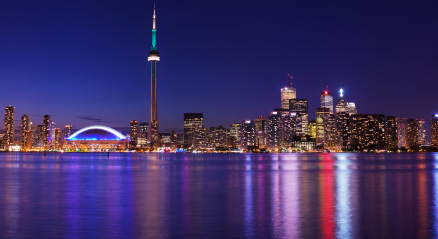
Last month, we took a look at some of the best cities in the world for art lovers, with the hope of inspiring some of you to shake the dust off and take an art-filled winter vacation. A couple of you wrote to us and said that you'd already been to the cities we mentioned - and to be fair, they were pretty popular options - but popular for good reason. With that in mind, we decided to prepare a short list of some lesser-known cities that have burgeoning art communities, both in terms of established galleries and flourishing smaller scenes. We'll look at a different city each time, and zoom in close to give you an idea of what you can expect if you manage to visit.
First on the list is Toronto, Canada. While Toronto has been making headlines lately thanks to its buffoon of a mayor, the art scene is still going strong. Toronto is probably most recognized for being home to the Art Gallery of Ontario, which boasts an impressive collection of Canadian painters, as well as the majority of the collected works of Henry Moore, a famous sculptor who donated his entire personal collection to the AGO. Recent exhibits at the AGO have also featured Ai Weiwei, the famous Chinese dissident artist that we discussed in another post recently. Mr. Ai had also recently been hosted by Toronto for an installation that was located outside city hall entitled "Forever Bicycles", a truly beautiful piece, although sadly a temporary one. New exhibits are hosted regularly, and there's almost something worth seeing.
There are a huge number of lesser known galleries scattered throughout the city, but there is a high concentration of young, fresh-faced galleries in an area just west of downtown known as Queen West, located (unsurprisingly) on Queen Street West, between Gladstone Ave and Bathurst Street. It's easy to pass an entire day wandering along the strip, taking in the various sights and sounds, as long as the occasional hipster throng doesn't put you off - in fact, it's sort of expected in this area.
If film is more your style, Toronto also plays host to the annual Toronto International Film Festival, which is usually held in September - but those of you already fantasizing about going would do well to start planning your trip well in advance, as the entire downtown core tends to get rather booked up by mid-Summer. Stars, glitz, glamour and great movies are a sure thing.
Posted on January 02nd 2014 on 06:28pm
0 Comments
 It's no surprise that the art world changes regularly - innovation, re-examination and remixing are three of the main driving forces behind artistic vision, and have been there in some form or other since the very beginning of recorded history. It should come as no surprise, then, that the way both artists and viewers interact with art is also undergoing a change. To any of you who already use a Gallereo page to sell your work, whether in conjunction with offline galleries or not, this should come as no surprise. After all, you're already adopting one of the major changes that have shaken up the traditional gallery model. Online art sales are booming, and while many buyers don't want to buy artwork without seeing it 'in the flesh', this attitude is also changing.
It's no surprise that the art world changes regularly - innovation, re-examination and remixing are three of the main driving forces behind artistic vision, and have been there in some form or other since the very beginning of recorded history. It should come as no surprise, then, that the way both artists and viewers interact with art is also undergoing a change. To any of you who already use a Gallereo page to sell your work, whether in conjunction with offline galleries or not, this should come as no surprise. After all, you're already adopting one of the major changes that have shaken up the traditional gallery model. Online art sales are booming, and while many buyers don't want to buy artwork without seeing it 'in the flesh', this attitude is also changing. Getting your artwork online and presented in the best possible way can be quite a challenge. Once you've created your masterpieces, and you've taken your digital photos using a colour-calibrated workflow (check out our recent posts on those topics if you missed them), you're going to need a good quality image editor to finish off your images. No, MS Paint doesn't count, but fortunately there are a ton of other great editors out there.
Getting your artwork online and presented in the best possible way can be quite a challenge. Once you've created your masterpieces, and you've taken your digital photos using a colour-calibrated workflow (check out our recent posts on those topics if you missed them), you're going to need a good quality image editor to finish off your images. No, MS Paint doesn't count, but fortunately there are a ton of other great editors out there.  In the continuation of our exploration of the lesser-known cities around the world that cater to artists, it's time to move things out of the North and get a break from the relentless winter that just won't seem to let up. Santa Fe, New Mexico is definitely on the lesser-known side of things even to those in North America, and so is probably virtually unknown throughout the rest of the world. Located in a stunning series of geological formations, it has a feel truly all it's own - that has created some truly beautiful pieces of work.
In the continuation of our exploration of the lesser-known cities around the world that cater to artists, it's time to move things out of the North and get a break from the relentless winter that just won't seem to let up. Santa Fe, New Mexico is definitely on the lesser-known side of things even to those in North America, and so is probably virtually unknown throughout the rest of the world. Located in a stunning series of geological formations, it has a feel truly all it's own - that has created some truly beautiful pieces of work. It's no secret that the art world is undergoing some major changes. As we discussed recently, the market for auctionable art has taken a turn for the better in recent years, driven by expanding wealth in Asia and the Middle East, as well as increasing consumer confidence throughout the West. However, in the market for artists still making a name for themselves, a number of other changes are taking place, most notably the transition away from the traditional model of the independent gallery towards online galleries managed by the artists themselves as well as the growing popularity of the 'art fair'.
It's no secret that the art world is undergoing some major changes. As we discussed recently, the market for auctionable art has taken a turn for the better in recent years, driven by expanding wealth in Asia and the Middle East, as well as increasing consumer confidence throughout the West. However, in the market for artists still making a name for themselves, a number of other changes are taking place, most notably the transition away from the traditional model of the independent gallery towards online galleries managed by the artists themselves as well as the growing popularity of the 'art fair'. While it may not be common knowledge in much of Europe, America's car manufacturing heartland is having some troubled times of late. After talks of bailouts of major car companies and successfully saving a few of them, we're finally starting to see some more complete fallout from the 2008 economic collapse that crippled much of American industry. One of the less-expected casualties from this turmoil, however, was the city of Detroit. Known unofficially as 'Motor City', Detroit was at the centre of American car manufacturing for a number of companies, and the city has been left bankrupt and desolate as jobs moved away and with them, the people. Abandoned houses are common, and the city is struggling to balance its debts.
While it may not be common knowledge in much of Europe, America's car manufacturing heartland is having some troubled times of late. After talks of bailouts of major car companies and successfully saving a few of them, we're finally starting to see some more complete fallout from the 2008 economic collapse that crippled much of American industry. One of the less-expected casualties from this turmoil, however, was the city of Detroit. Known unofficially as 'Motor City', Detroit was at the centre of American car manufacturing for a number of companies, and the city has been left bankrupt and desolate as jobs moved away and with them, the people. Abandoned houses are common, and the city is struggling to balance its debts. Ever since the global economic meltdown in 2008, the art market has been in some relatively dire straits. Many famous works that were put up for auction by famous auction houses remained unsold, or sold for amounts that were barely eye-catching at the time. Fortunately, the rise in consumer confidence that many nations around the world have begun to experience is also making its way into the global art market, which has once again begun to thrive.
Ever since the global economic meltdown in 2008, the art market has been in some relatively dire straits. Many famous works that were put up for auction by famous auction houses remained unsold, or sold for amounts that were barely eye-catching at the time. Fortunately, the rise in consumer confidence that many nations around the world have begun to experience is also making its way into the global art market, which has once again begun to thrive. We've discussed a number of different ways you can structure your Gallereo page in order to boost your sales, from taking advantage of search engine optimisation to writing complete descriptions all the way to using social media to build a name for yourself and ideas for maintaining and building readership using your built-in Gallereo blog. There is an element to your Gallereo page that can make an even larger difference to your success - the visual style, of course! We've held back from commenting on this because it's fairly personal in terms of your own unique artistic vision, but there are still some basic design pointers that we can offer that will be especially beneficial to those of you who are new to the whole web design world.
We've discussed a number of different ways you can structure your Gallereo page in order to boost your sales, from taking advantage of search engine optimisation to writing complete descriptions all the way to using social media to build a name for yourself and ideas for maintaining and building readership using your built-in Gallereo blog. There is an element to your Gallereo page that can make an even larger difference to your success - the visual style, of course! We've held back from commenting on this because it's fairly personal in terms of your own unique artistic vision, but there are still some basic design pointers that we can offer that will be especially beneficial to those of you who are new to the whole web design world. GIF, JPEG, PNG, TIFF - those of you who are new to the world of digital images might feel a little overwhelmed by the acronyms alone, and they can seem a bit daunting to us old hands as well sometimes. When you're saving your perfectly edited image, whether it's a digital painting or a photograph of your latest sculpture, it can sometimes seem completely impossible to navigate the wide arrays of file formats and settings that you are presented with. The four listed above are really the only ones you're like to need to work with, and we'll take you through the merits of each one.
GIF, JPEG, PNG, TIFF - those of you who are new to the world of digital images might feel a little overwhelmed by the acronyms alone, and they can seem a bit daunting to us old hands as well sometimes. When you're saving your perfectly edited image, whether it's a digital painting or a photograph of your latest sculpture, it can sometimes seem completely impossible to navigate the wide arrays of file formats and settings that you are presented with. The four listed above are really the only ones you're like to need to work with, and we'll take you through the merits of each one. Last month, we took a look at some of the best cities in the world for art lovers, with the hope of inspiring some of you to shake the dust off and take an art-filled winter vacation. A couple of you wrote to us and said that you'd already been to the cities we mentioned - and to be fair, they were pretty popular options - but popular for good reason. With that in mind, we decided to prepare a short list of some lesser-known cities that have burgeoning art communities, both in terms of established galleries and flourishing smaller scenes. We'll look at a different city each time, and zoom in close to give you an idea of what you can expect if you manage to visit.
Last month, we took a look at some of the best cities in the world for art lovers, with the hope of inspiring some of you to shake the dust off and take an art-filled winter vacation. A couple of you wrote to us and said that you'd already been to the cities we mentioned - and to be fair, they were pretty popular options - but popular for good reason. With that in mind, we decided to prepare a short list of some lesser-known cities that have burgeoning art communities, both in terms of established galleries and flourishing smaller scenes. We'll look at a different city each time, and zoom in close to give you an idea of what you can expect if you manage to visit.



